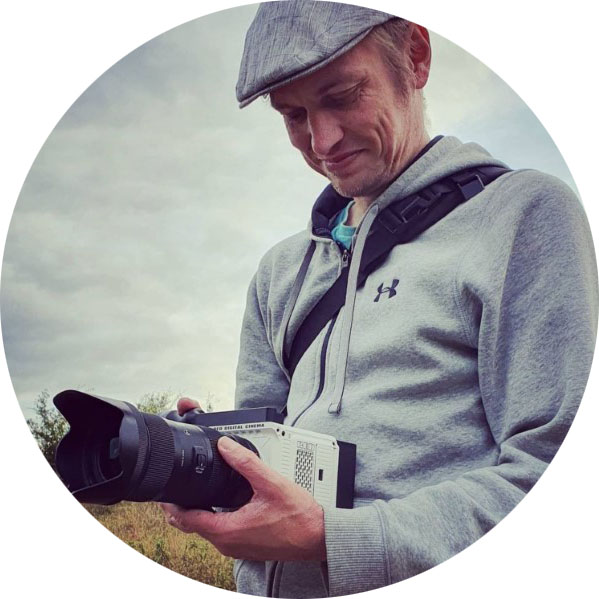In the previous article, we looked at different lighting types, such as natural and artificial. Now it’s time to move on to light bulbs and accessories that help to manipulate the light.
As you probably know, different bulbs produce light, such as incandescent, halogen, tungsten, etc. Each has its properties and is suitable for particular situations.
This article covers the main types of light sources and related accessories, such as softboxes, umbrellas, gels, flags, etc.
Table of Contents
LED lights

LED panels have become increasingly popular. They are more energy-efficient and versatile than other light sources, and because of this, they’ve taken over the market—especially for smaller-scale productions. So, let’s start with these.
LED (Light Emitting Diode) lights are versatile, energy-efficient sources that can emit a wide range of color temperatures, from warm to cold, without changing the bulb. They use semiconductors to convert electricity into light.
You might like: Best Budget-Friendly LED Lighting Kits For Video.
LED light types and sizes
LED lights can be found in many lamps today, including LED panels, fresnels, open-faced lamps, on-camera lights, ring lights, and tubes.
LED panels can be small or very large, and their price varies accordingly. Some are even flexible, which makes it possible to wrap them around, e.g., a round column in a house.
Ease of Use
The beauty of an LED light is that it can be set up in minutes and doesn’t produce heat, unlike other light sources such as tungsten.
Also, LED lights don’t necessarily need to be connected to a power outlet. You can plug them into a compatible portable battery, and you’re good to go. This makes life much more comfortable when filming outdoors, where you don’t always have access to a power outlet.
LED panels can be dimmed, and some can cast light in different colors, not only white. Today you can get budget-friendly RGB panels that not only can produce tungsten and daylight colors but also almost any color you can imagine.
Beware of Low-Quality LEDs
However, low-quality LEDs have their fair share of disadvantages. One is flickering, especially if you keep them at reduced brightness. So make sure to get some that are “flicker-free.” Low-quality LED panels also tend to cast a green tint, which you must correct in post-production.
Common Uses: LED lights are used for various purposes, including key lights, fill lights and even background illumination. They are instrumental in situations requiring portable, battery-operated lights.
- Pros: Energy-efficient, generates minimal heat, has a long lifespan, and offers adjustable color temperatures.
- Cons: Higher-quality LED panels can be expensive, and cheaper models might have color rendition issues.
Ring lights
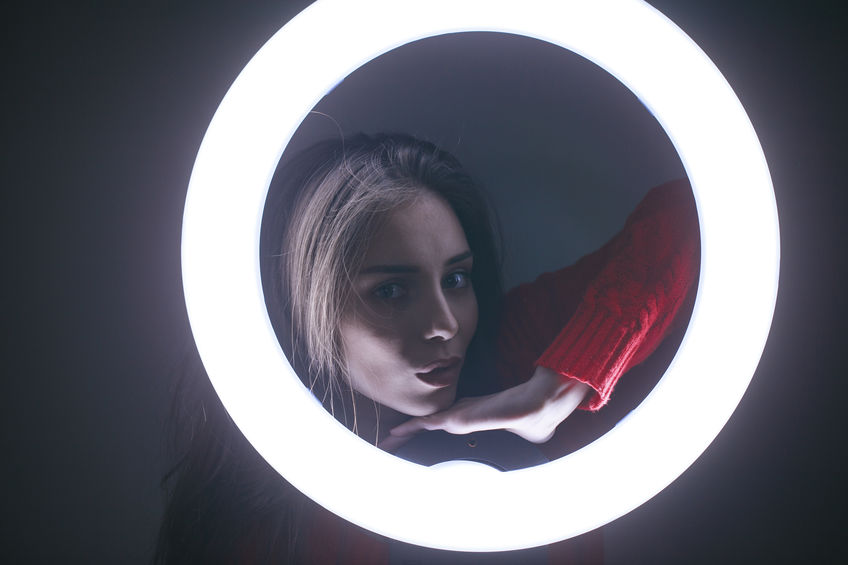
Another great piece of equipment for video lighting is ring lights. These circular (LED or fluorescent) tubes provide continuous light, so they’re called ring lights!
They are a favorite among YouTubers and vloggers who require a decent light source that eliminates shadows.
You can read more about ring lights for YouTube and vlogging here.
Ring lights are also popular among portrait photographers and videographers, who prefer a ring reflection in the eyes of their subjects (instead of a square or rectangular-shaped reflection.)
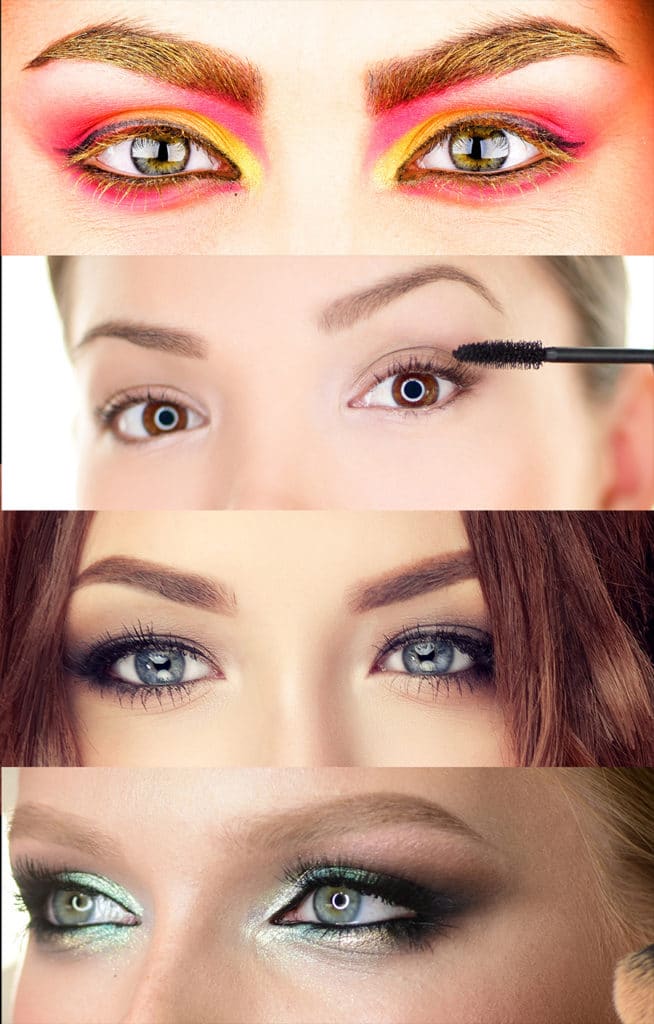
Ring lights can also be dimmable and tiltable (you can change their angle according to your preferences) and have long lifespans of around 1,500-2,000 hours.
Common Uses: Popular for beauty shots, vlogging, and portraits due to the flattering, soft light they produce.
- Pros: Produces soft, even lighting with minimal shadows. Great for close-up work.
- Cons: Limited creative lighting setups. Can be cumbersome to set up and transport.
Sun guns and on-camera lights
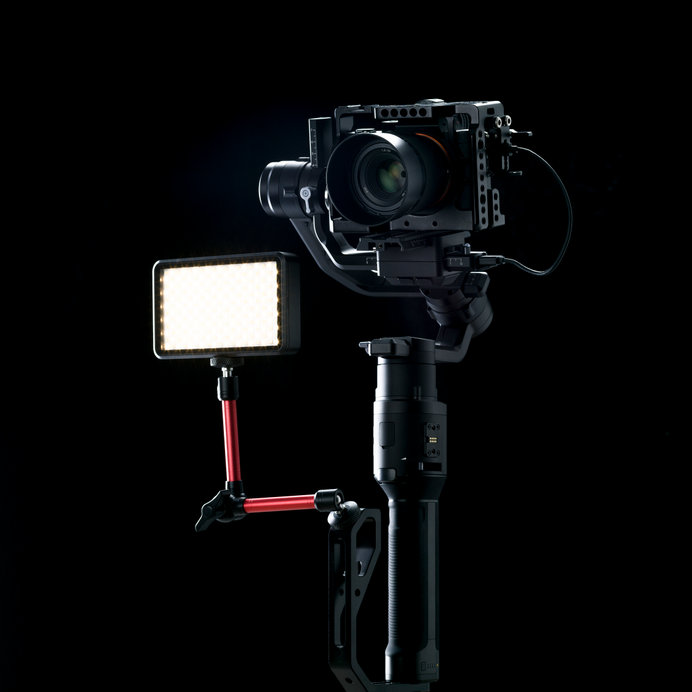
On-camera lights (sun guns) are small portable lamps mounted on cameras or a gimbal.
TV news reporters often use sun guns when they’re out in the field covering an event.
But they’ve also become popular among vloggers and travel vloggers who must always carry a small light around. And the newer RGB versions can produce all sorts of colors besides daylight and tungsten.
Here is a list of some of the best portable (and affordable) on-camera RGB lights available today.
On-camera lights can also be used for interviews. Still, because of their small size and placement on the camera, on-camera lights don’t provide a flattering light compared to bigger light sources in off-camera positions.
On-camera lights can be of many different types, e.g., a fresnel, an LED panel, or a Dedolight.
They might also come with barn doors to point the light in a specific direction. Their light can be dimmed, softened with a softbox, or changed by using a colored gel if necessary.
One of the main advantages of sun guns is that they’re portable. You can easily hold one in your hand and point it in any direction during filmmaking.
If you’re interested in some tiny on-camera lights for your DSLR or mirrorless camera, you should check out my comparison review of the Aputure AL-M9 vs AL-MX Tiny LED-Lights.
Tungsten light
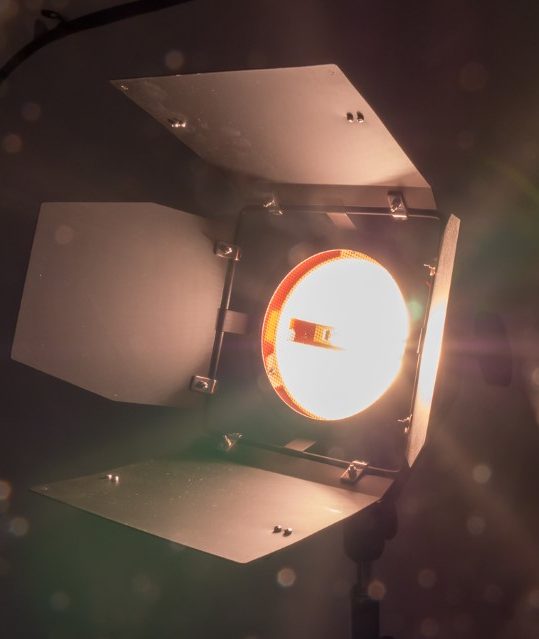
Tungsten or incandescent lighting produces light by heating a filament inside a glass bulb. They emit a warm, yellowish light, typically around 3200K (Kelvin), comparable to indoor lighting.
Tungsten lights are often used for indoor scenes to create a warm atmosphere. They’re excellent for close-ups, where the warm light can flatter the subject’s skin tones.
Common Uses: Tungsten lights are often used for indoor scenes to create a cozy, warm atmosphere. They’re excellent for close-ups, where the warm light can flatter the subject’s skin tones.
- Pros: Relatively inexpensive and offer excellent color rendition.
- Cons: Generates much heat, has long cooldown times, consumes more power, and has a shorter bulb life than LED lights.
Halogen light
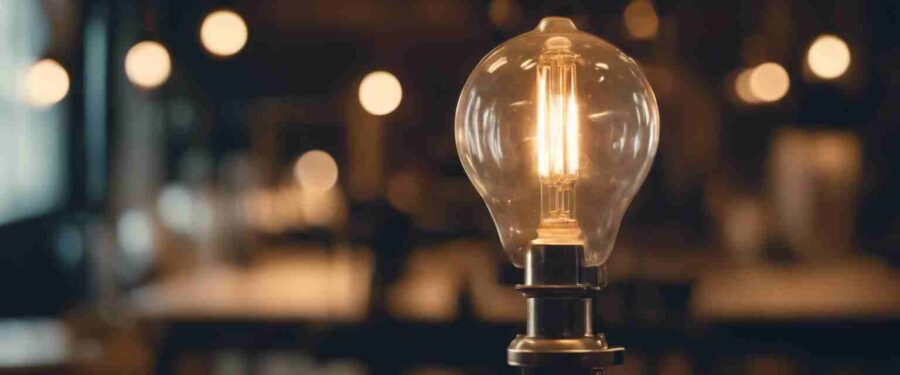
A halogen light bulb or lamp is also known as a quartz-iodine lamp.
It is similar to tungsten incandescent bulbs and usually has the same color temperature, around 3000 K.
Common Uses: Halogen lights are very compact and can be used as practical lights (motivated lighting) in the scene (e.g., a lamp in the background).
- Pros: Relatively inexpensive and compact.
- Cons: Generate more heat, consume more power, and have a shorter bulb life than LED lights.
Fluorescent light
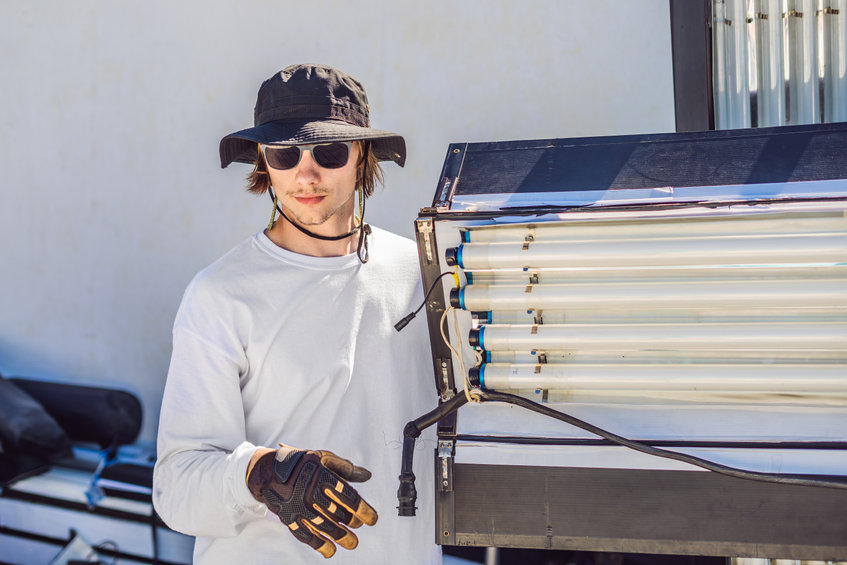
Fluorescent lights use a gas-charged tube to produce light. They are known for their soft, diffused lighting and are available in various color temperatures, which depend on the amount of phosphorus inside the lamp.
For example, residential fluorescent tubes can have a warm-white color and a color temperature of 2700 K. Cool-white fluorescent lamps have a blue-white color and a temperature of 4100 K. Fluorescent lights that simulate daylight colors can have temperatures between 5000 K and 6500 K.
Common Uses: soft lighting in interviews or to light up large areas evenly without harsh shadows.
- Pros: Energy-efficient, produces less heat than tungsten lights, and provides a soft, even light.
- Cons: Some fluorescent lights can have a flickering issue and might not render colors accurately.
Fresnel lights

Fresnel lights are light sources equipped with a Fresnel lens.
A Fresnel lens is a compact lens invented by Augustin-Jean Fresnel, a French physicist. They use a specific type of stepped lens to focus the beam more precisely than a typical lens. This lens type was initially used in lighthouses to increase the focus of the light.
Fresnel lights can produce various lighting types, from a spot to a flood. They are typically tungsten or LED, but you can use HMI-fresnels on large productions.
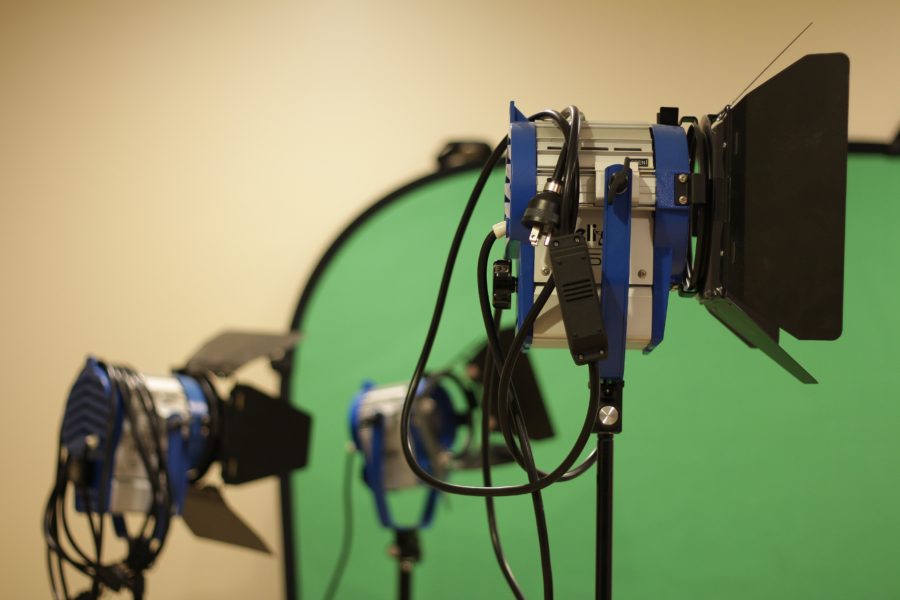
Common Uses: It is used for precise lighting needs, such as spotlighting a subject or creating a dramatic effect with hard light. It is ideal for indoor and outdoor use and can create anything from a light beam through smoke to amplify a candlelight scene or simulate sunlight.
- Pros: Versatile controlling the light spread. Durable and relatively easy to handle.
- Cons: Tungsten Fresnels generate a lot of heat. LED versions are more expensive.
Open-face lamps

Open-face lights are essentially tungsten without a lens, producing a wide, uncontrolled, and hard light.
Open-face lamps have various wattage values. The most common are “redheads” at 800 watts and “blondes” at 2000 watts. You can read more about redheads in my review CineLight Redhead 800 Watt with Light Stand.
Open-face lamps feature a metal housing and usually have tungsten/halogen light fixtures. Often, they also feature “barn doors,” which are aluminum reflectors that can be positioned to direct the light in a certain way.
Open-face lamps can include a softbox and a dimmer to reduce or increase the intensity of the light.
Common Uses: They often bounce light off surfaces or pass through diffusion material to light up broader areas. They are useful for simulating sunlight or filling large spaces.
- Pros: Simple, relatively inexpensive, and powerful.
- Cons: Light is hard to control without modifiers, generates a lot of heat, and can be too harsh for direct lighting on subjects.
See also How Many Watts Do I Need for Video Lighting?
Dedolights

Dedolights was created in 1984 by the German cinematographer Dedo Weigert. They are also known as “Dedolites” and can be mounted in tight places where large open-face lamps don’t fit.
DedoLights are compact, focusable tungsten or LED lights known for their precision and control. They can produce a very tight beam of light, which can be expanded and softened using built-in focusing mechanisms.
Common Uses: They’re often used to create pinpoint or accent lighting, highlighting specific areas or objects, and when space is limited.
- Pros: High control over the light beam, energy-efficient (especially the LED models), and excellent color rendering. They can also be fitted with cookies and filters to modify the light.
- Cons: Can be relatively expensive and may require additional accessories for maximum versatility.
HMI lights
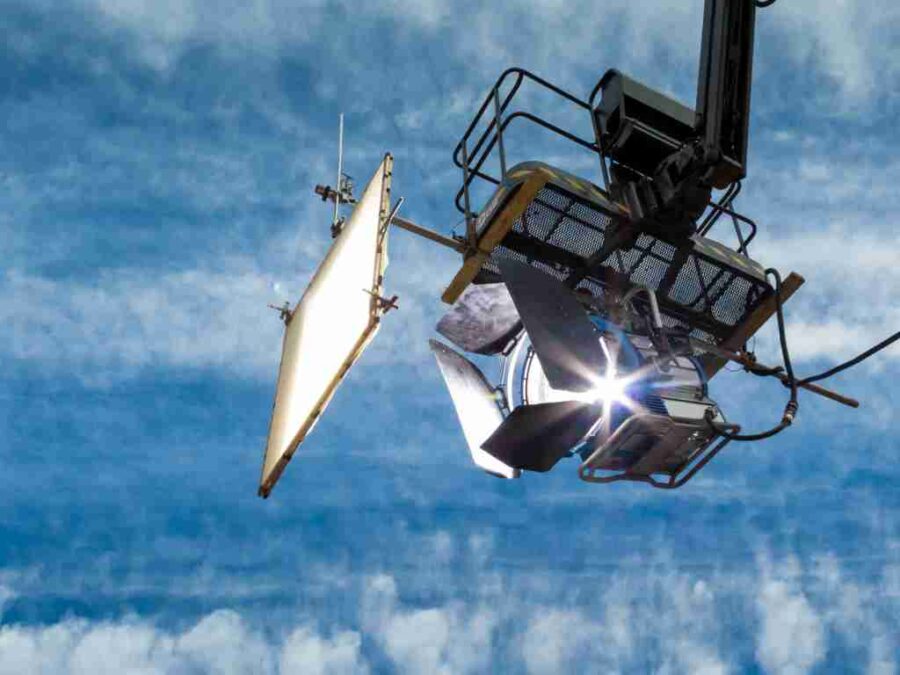
HMI stands for Hydrargyrum medium-arc iodide, a type of light explicitly made for cinematography. It is based on mercury vapors (hydrargyrum means mercury in Greek) and a quartz-glass envelope.
Without getting into the nitty-gritty details, the important thing about an HMI lamp is that it can be four times more efficient than conventional light bulbs.
The color temperature of an HMI lamp is about 6000 K, similar to the sun at noon times. Some modern HMI lamps can be dimmed up to 50 %.
Common Uses: HMIs are commonly used for outdoor scenes or in large studios to mimic natural daylight.
- Pros: High output with less power consumption compared to tungsten. Excellent for achieving a natural daylight look.
- Cons: Expensive, require ballasts to operate, and can be hazardous due to the intense light and UV radiation they emit.
Parabolic aluminized reflectors
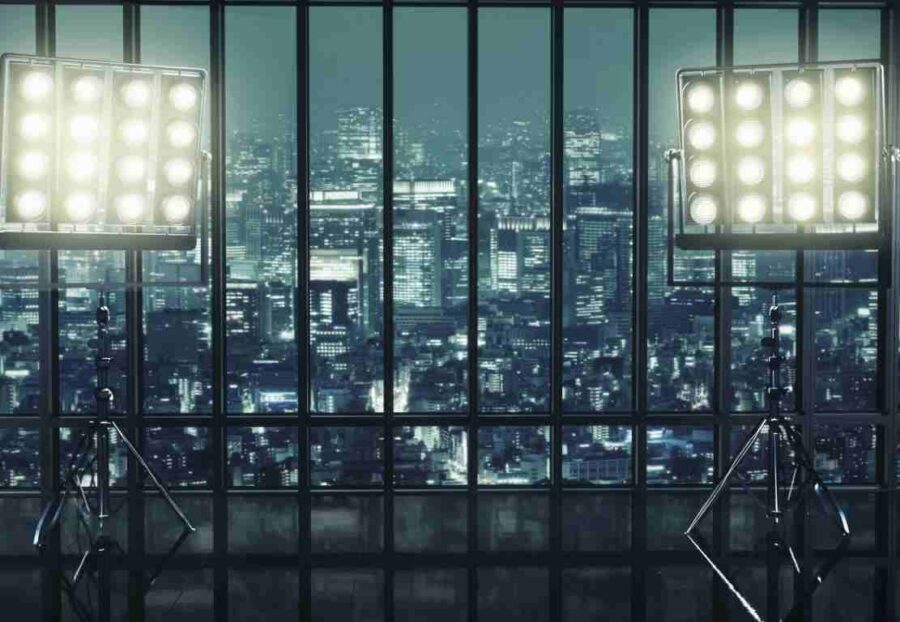
PARs use a parabolic reflector to focus the light, with different lenses or bulbs to adjust the spread and intensity. They can be tungsten, HMI, or LED.
Parabolic aluminized reflectors (or PARs) are similar to spotlights or open-face lights, except that they cast an oval-shaped light.
PARs are equipped with lenses and are used to create soft lights in different movie scenes. They are usually used to cast shafts of lights and can be mounted on ceilings to illuminate a stage in a theater.
These lighting options are available in sizes 16, 20, 36, and so on, up to 64. The numbers indicate the diameter of the light bulb in eighths of an inch. For example, a Par 16 has a 2-inch light bulb, and a Par 64 has an 8-inch light bulb.
Common Uses: Throwing intense light over a long distance, such as for simulating sunlight or for use in large spaces (fx stages).
- Pros: Highly efficient in terms of light output, versatile with the use of different bulbs or lenses.
- Cons: The light can be very harsh and may require diffusion. They’re also less precise than focused lights like DedoLights.
Light modifiers
Light modifiers are accessories designed to reflect, focus, and generally alter the direction and intensity of a light source.
Each has pros and cons and is used to film certain scenes.
Reflectors

As the name implies, reflectors are designed to reflect light and focus it or point it in a particular direction.
Reflectors are available in various sizes and are usually circular. Some are more suitable for photography, while others are used explicitly for filmmaking.
Reflectors can be attached to light sources. Reflectors are often made from aluminum or a similar light metal.
Scrims

Scrims are fabric, silk, or cloth pieces that produce soft light. They are usually rectangular, square, or circular and of various sizes.
Scrims are opaque but let much light pass through when illuminated from behind. Their purpose is to cast a soft light over a subject.
Scrims are used in both videography and photography. For example, the filmmaker or photographer puts a scrim between the subject and a bright light source. The scrim bathes the issue in a beautiful, soft light, creating an ideal photography environment.
Gels

Gels, also known as filters, consist of sheets of plastic that can be placed on a light source to modify its color.
Some color gels are also heatproof to withstand the vast heat produced by a large light source.
Gels are ideal for adding a certain tint or color nuance to a scene. For example, black or grey gels can create the appearance of a cloudy day, and red gels can suggest aggressiveness, tension, or romance.
Flags
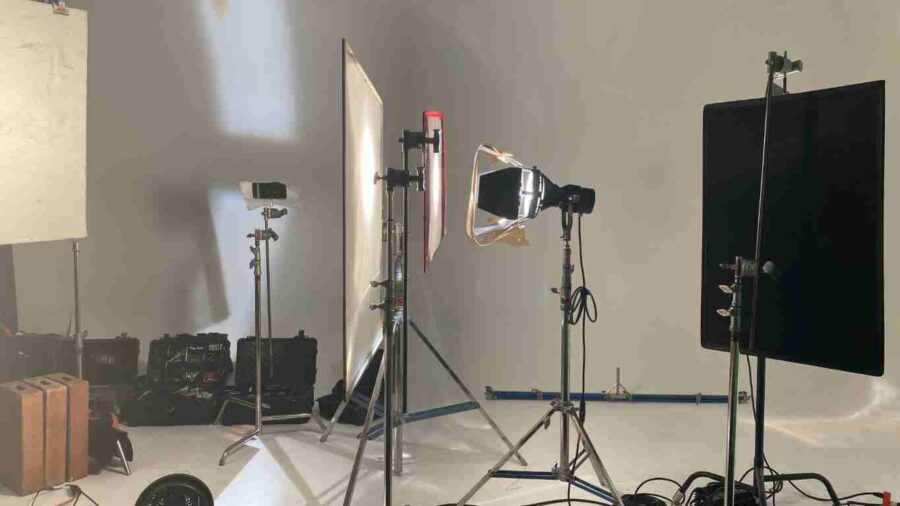
Flags are large pieces of material used to block light from entering a video shot. Think of them as black curtains that don’t allow light to pass.
Filmmakers use flags to darken a particular scene or manipulate the light in one way or another. They are available in various sizes and usually come with an arm that can be attached to a stand.
Cookies
Cookies (slang for Cucoloris) are like flags, except that they have patterns cut out of them.
Cookies are mainly used to create specific patterns using light, e.g., to show beautiful arrangements of view on various backgrounds or materials.
Umbrellas
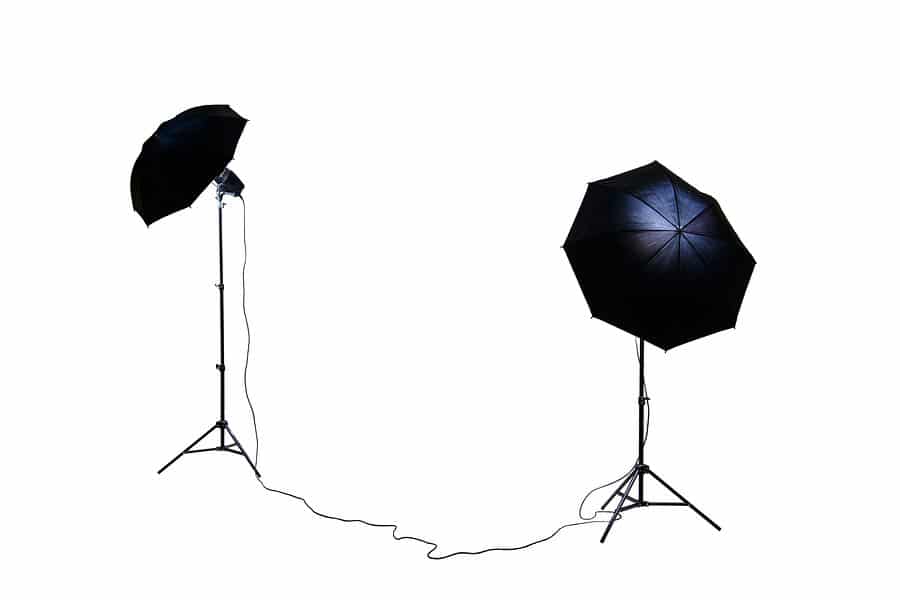
Umbrellas are designed to reflect the light or create soft lights.
Umbrellas come in different sizes and usually feature certain colors such as white, silver, gold, or black.
They can be attached to light sources and adjusted to cast more or less light on a subject.
You’ll often see umbrellas with a different shape, not necessarily circular.
There are rectangular umbrellas out there, as well as square ones. These can also be adjusted to focus the light in a certain way and are very popular in photography and videography.
Softboxes
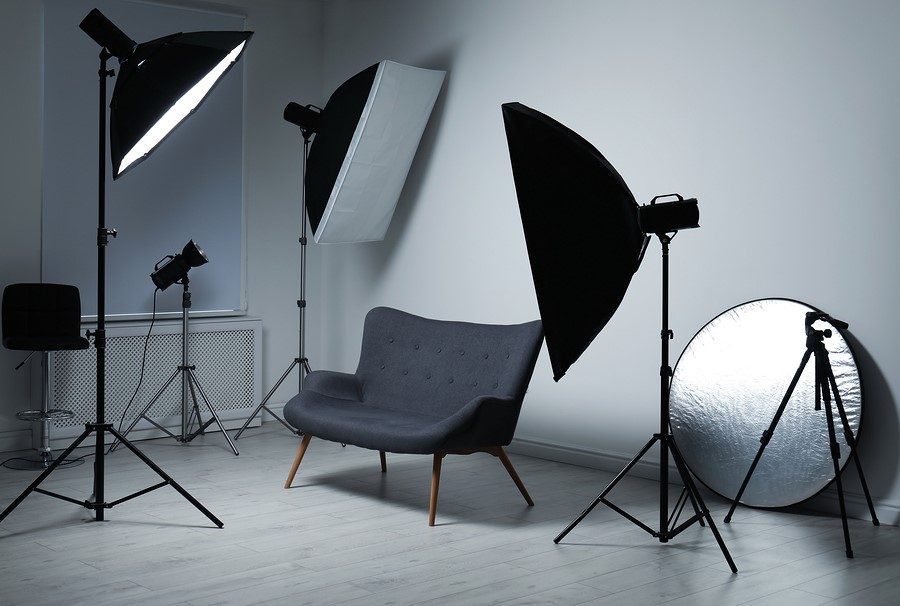
A softbox is a large box used to diffuse the light so it becomes nice and soft.
Some softboxes are compatible with specific light sources, such as open-face lights or LED panels.
Softboxes are available in numerous sizes and shapes. Photographers and filmmakers use large softboxes that wrap around a powerful light source during photo sessions or interviews.
This creates a large amount of light that embraces the subject and gives the impression of a warm and welcoming atmosphere.
Jemballs

Jemballs, or China balls, look similar to Chinese paper lanterns. They cast a soft light and are available in 22- or 30-inch sizes. You can use different light bulbs with jemballs to create light in various color temperatures.
Jemballs can also be mounted on stands or hung from above, creating a pleasant, warm ambiance during filming.
Closing Thoughts
These are the basics of light sources and light modifiers. As you can see, there are numerous accessories to play with, and each can be used for a particular scene or moment during the filmmaking process.
In the next article, we’ll take a look at lighting setups. You’ll learn more about 1-point lighting, 2-point lighting, key light, fill light, and more, so stay tuned!

